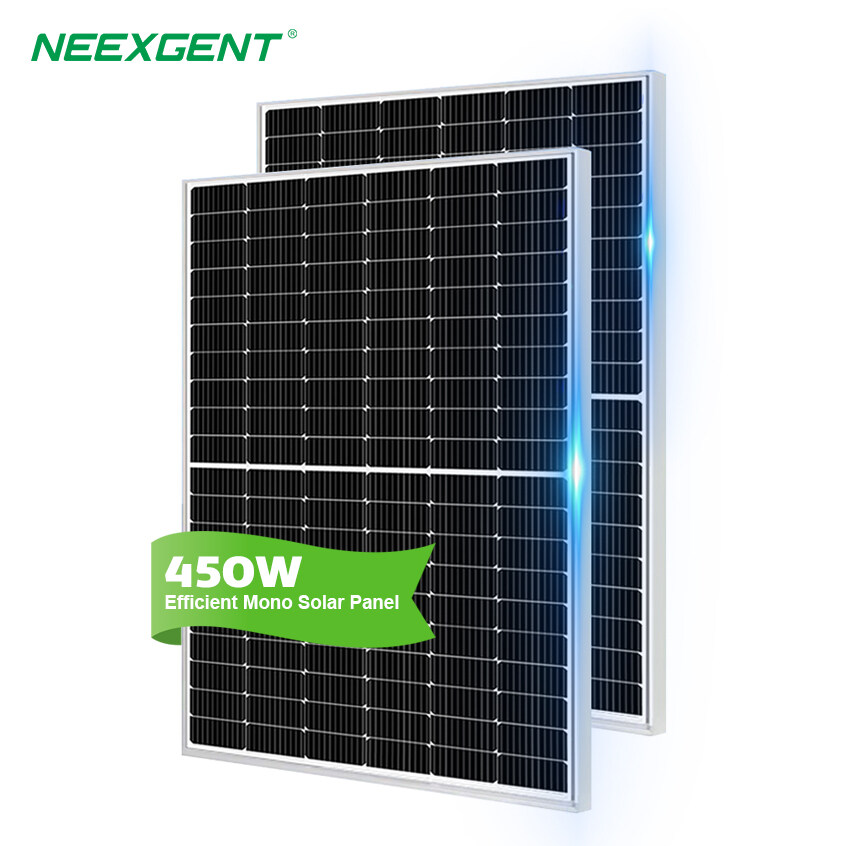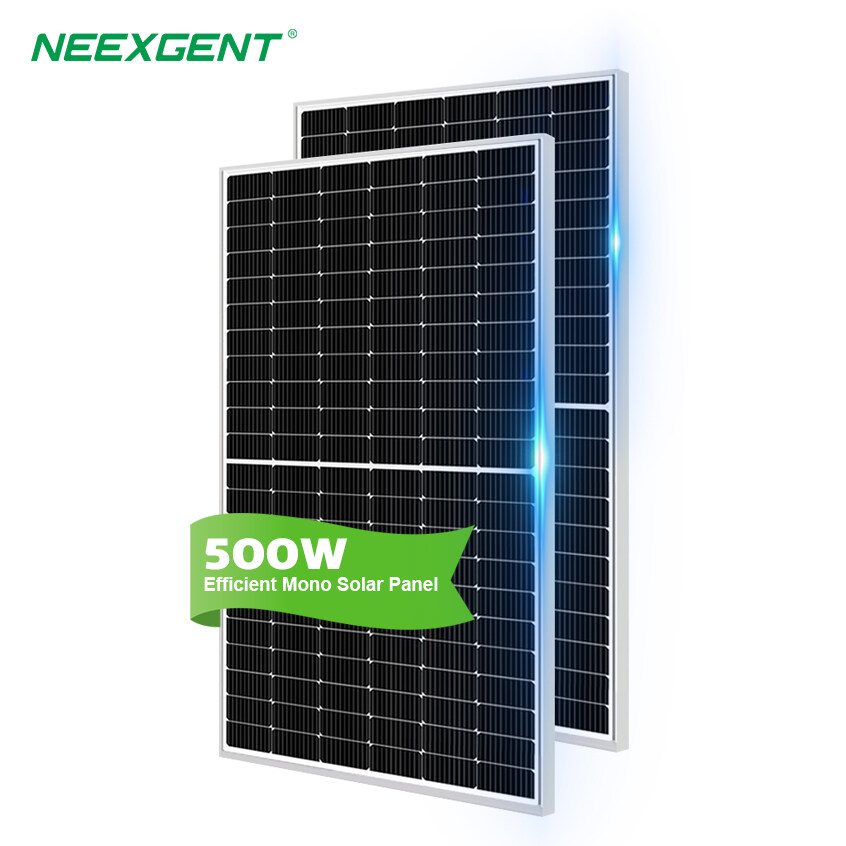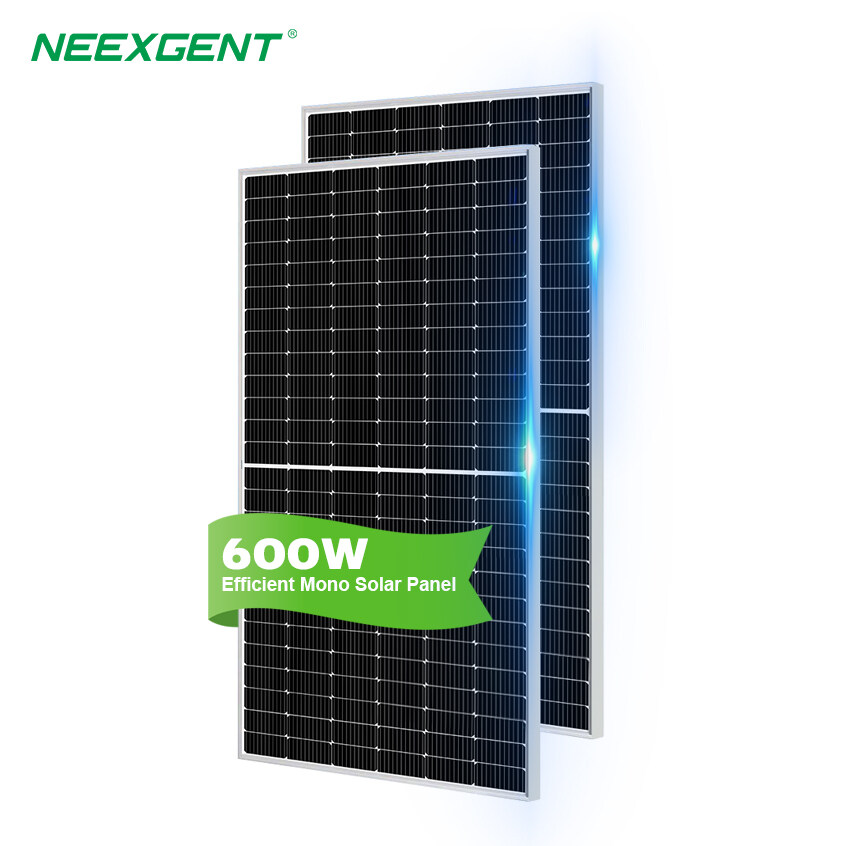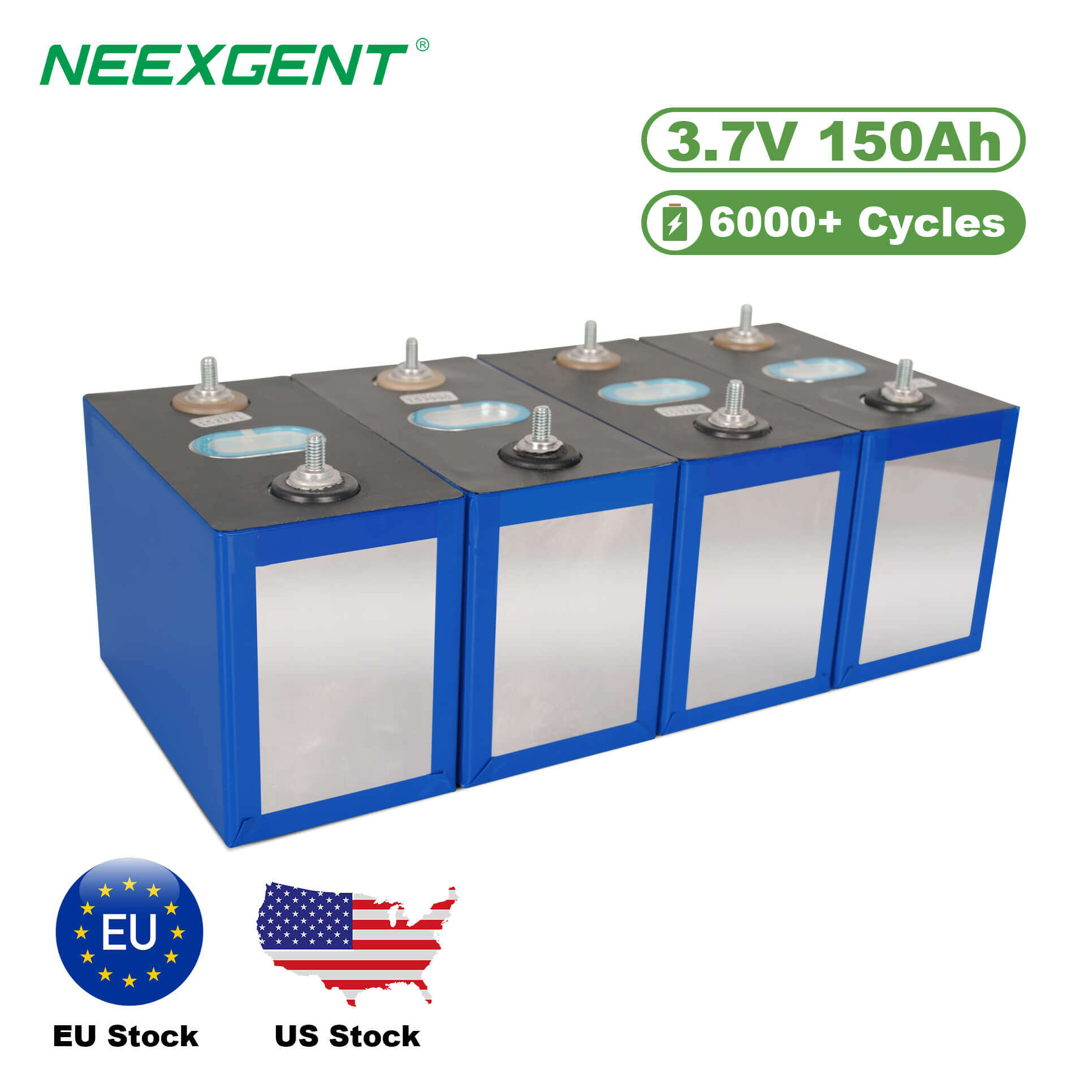Contents:
1. Overview of Solar Panels and Wind Turbines
2. Efficiency Comparison
3. Cost Comparison
4. Environmental Impact
5. Applications and Use Cases
6. Conclusion
The growing emphasis on renewable energy sources has led to the widespread adoption of solar panels and wind turbines. Both technologies offer sustainable alternatives to traditional fossil fuels, but they have distinct advantages, limitations, and applications. This article explores the differences between solar panels and wind turbines, evaluating them on various parameters such as efficiency, cost, environmental impact, and application.
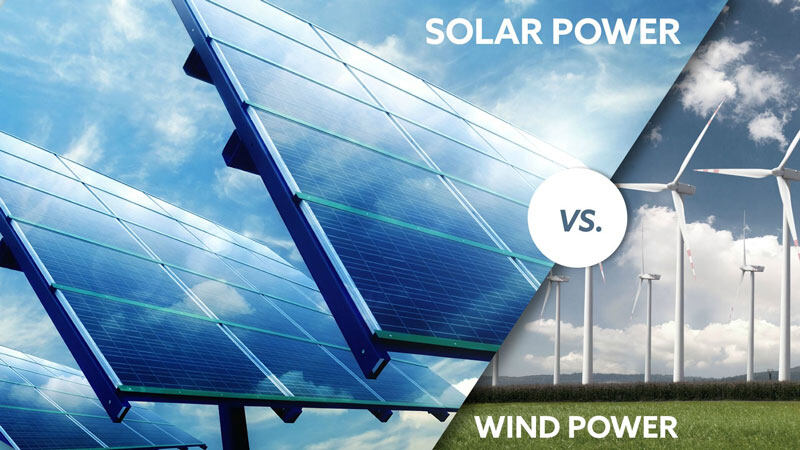
1. Overview of Solar Panels and Wind Turbines
Solar Panels
Solar panels, also known as photovoltaic (PV) cells, convert sunlight directly into electricity. The technology behind solar panels has evolved significantly over the past few decades, making them one of the most popular renewable energy solutions worldwide. Solar energy systems are scalable and can be installed on rooftops, fields, and even integrated into building materials.
According to Wikipedia: Solar Panel, solar panels are increasingly becoming a cost-effective way to generate electricity in both residential and commercial settings.
Advantages:
-
Abundant Resource: Solar energy is widely available and can be harnessed in almost any geographic location.
-
Low Maintenance: Once installed, solar panels require minimal maintenance.
-
Eco-friendly: Solar energy systems do not emit harmful greenhouse gases during operation.
Disadvantages:
-
Weather Dependent: Solar panels rely on sunlight, so their performance can be affected by weather conditions and time of day.
-
Space Requirements: Large-scale solar farms require significant land area to produce substantial amounts of energy.
Wind Turbines
Wind turbines use the kinetic energy of wind to generate electricity. Wind energy has been used for centuries, but modern wind turbines are highly efficient and can generate electricity at a much larger scale than their predecessors. Wind farms are often located in areas with high wind speeds, such as coastal regions or open plains.
According to Wikipedia: Wind Turbine, wind turbines are now used in large commercial farms to provide electricity to the grid.
Advantages:
-
High Efficiency: Wind turbines can produce large amounts of electricity, especially in areas with consistent wind patterns.
-
Land Use Flexibility: Wind farms can be installed on agricultural land, allowing for dual use of the space.
-
Renewable Resource: Like solar panels, wind turbines provide a clean, renewable source of energy.
Disadvantages:
-
Intermittent Energy: Wind speeds are not constant, meaning the output from wind turbines can fluctuate.
-
Aesthetic and Noise Concerns: Some people find wind turbines visually unappealing and noisy, especially when located near residential areas.
2. Efficiency Comparison
The efficiency of solar panels and wind turbines varies based on geographic location, technology, and system setup.
Solar Panel Efficiency
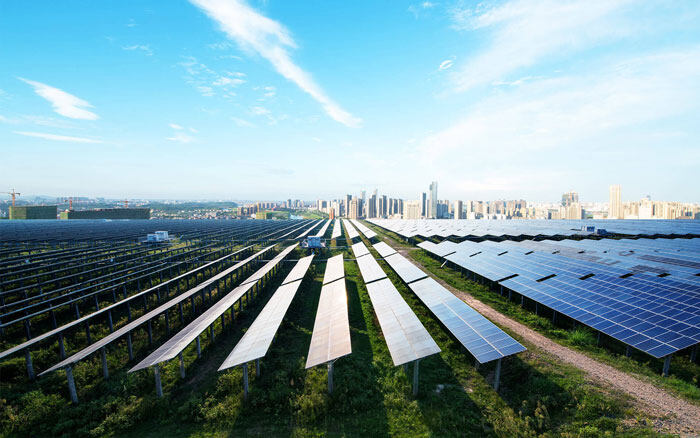
Solar panel efficiency typically ranges from 15% to 22%, depending on the technology used. The amount of energy generated by solar panels depends on the amount of sunlight they receive, which varies based on location, weather, and time of year. For instance, regions near the equator receive more direct sunlight, leading to higher efficiency.
Wind Turbine Efficiency
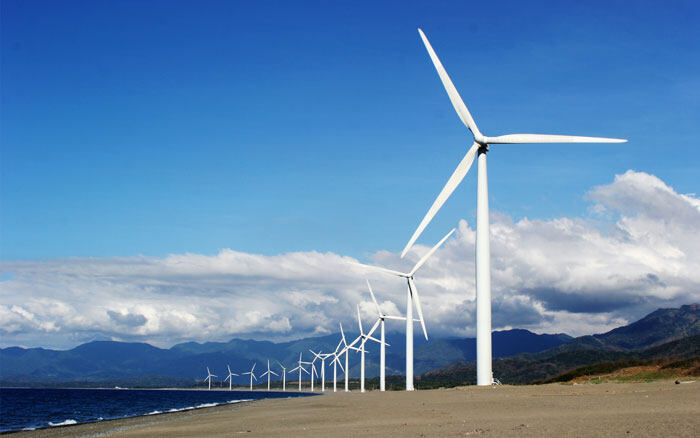
Wind turbines have an efficiency of around 35% to 45%, but this can increase significantly with larger turbines and optimal wind conditions. The efficiency of a wind turbine is largely determined by the wind speed, with turbines being most effective in areas with average wind speeds of 5 to 7 meters per second.
Comparative Efficiency
|
Energy Source
|
Average Efficiency
|
|
Solar Panels
|
15% - 22%
|
|
Wind Turbines
|
35% - 45%
|
3. Cost Comparison
The initial installation costs of solar panels and wind turbines can vary significantly. While both technologies have become more affordable in recent years, they still require substantial upfront investments.
Solar Panel Costs
The cost of installing solar panels typically ranges from $10,000 to $25,000 for residential systems. This price can vary depending on the size of the installation and the region. However, solar panels have relatively low operating and maintenance costs, making them a cost-effective option in the long run.
Wind Turbine Costs
Wind turbines, on the other hand, are more expensive to install, with costs ranging from $40,000 to $70,000 for residential wind turbines. Larger commercial wind turbines can cost several million dollars to install. Despite the higher initial investment, wind turbines can generate more electricity over time, making them an attractive option in areas with consistent wind patterns.
Cost Comparison
|
Energy Source
|
Initial Cost Range (USD)
|
Maintenance Costs
|
|
Solar Panels
|
$10,000 - $25,000
|
Low
|
|
Wind Turbines
|
$40,000 - $70,000
|
Moderate
|
4. Environmental Impact
Both solar panels and wind turbines offer significant environmental benefits compared to fossil fuels. However, they do have some environmental impacts associated with their production and installation.
Solar Panels
Solar panels are made from materials like silicon, silver, and rare earth metals. The manufacturing process of solar panels can result in greenhouse gas emissions, although these emissions are much lower than those of fossil fuels. Additionally, solar panels have a lifespan of around 25 to 30 years, after which they must be recycled or disposed of properly.
Wind Turbines
Wind turbines are generally considered to have a low environmental impact. The production of wind turbines involves steel, concrete, and other materials, but their overall carbon footprint is much lower than that of fossil fuels. Wind turbines can also disrupt local wildlife habitats, particularly birds and bats, although efforts are being made to minimize these effects.
Environmental Impact Summary
|
Energy Source
|
Environmental Impact
|
|
Solar Panels
|
Low carbon emissions during operation, material extraction impacts
|
|
Wind Turbines
|
Minimal emissions, potential wildlife disruption
|
5. Applications and Use Cases
Both solar panels and wind turbines have distinct applications depending on the geographic location and energy needs.
Solar Panel Applications
-
Residential Solar Power: Solar panels are widely used for residential energy generation, particularly in sunny regions.
-
Commercial Solar Farms: Large-scale solar farms are used to generate electricity for the grid.
-
Solar-Powered Devices: Solar panels are also used in smaller applications, such as powering remote sensors and small electronic devices.
Wind Turbine Applications
-
Wind Farms: Large-scale wind farms are typically located in areas with consistent wind speeds, such as coastal regions or open plains.
-
Offshore Wind Farms: Offshore wind farms are becoming increasingly popular due to their high energy generation potential.
-
Rural and Remote Areas: Wind turbines are ideal for off-grid applications, providing power to remote areas without access to the electrical grid.
6. Conclusion
In conclusion, both solar panels and wind turbines are valuable renewable energy solutions, each with its own set of advantages and challenges. Solar panels are more suitable for residential applications and locations with abundant sunlight, while wind turbines excel in areas with consistent wind patterns. The choice between the two technologies depends largely on the geographic location, energy needs, and budget.
Both technologies offer substantial environmental benefits, contributing to a cleaner, more sustainable future. As technology continues to improve, we can expect both solar and wind power to play a critical role in the global transition to renewable energy.

